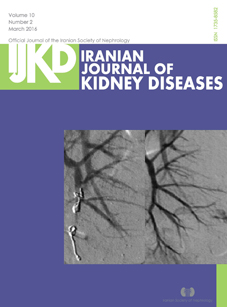Outcome of Kidney Transplantation From Living Donors With Multiple Renal Arteries Versus Single Renal Artery
Abstract
Introduction. Receiving a kidney transplant from donors with multiple renal arteries (MRAs) is suggested to be associated with higher risk of vascular and urologic complications and poor allograft outcomes compared to the donors with single renal artery (SRA). We evaluated survival rates in the recipients from donors with MRAs compared to those from donors with SRA.
Materials and Methods. In a retrospective study on 115 kidney allograft recipients, demographic characteristics and the outcomes of kidney transplantation were compared between the recipients from donors with MRAs compared to those from donors with SRA. These included acute tubular necrosis, acute allograft rejection, hypertension, vascular complications, urologic complications, kidney function indicators, and allograft survival at 1 year.
Results. There was no significant difference in the recipients' age, sex distribution, and weight, donors' age, donor-recipient familial relation, urologic complications, and duration of hospitalization between the two groups. However, MRA was significantly associated with a higher likelihood of right-side kidney donation, longer warm and cold ischemia times, and lower glomerular filtration rate and higher serum creatinine concentrations at discharge and 12 months after transplantation, as compared to SRA transplants. No significant difference was seen in late complications including hypertension and renal artery stenosis. One-year graft survival was slightly poorer in the MRA group than the SRA group.
Conclusions. Our results demonstrate that kidney allografts with MRAs are associated with risks but have acceptable outcomes during the 1st year after transplantation, as compared to SRA kidney allografts.


